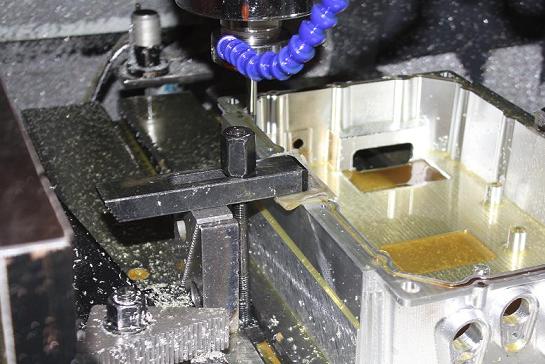Get in touch.
Dear,I will reply in 12 hours. All your message are protected!
Rapid Prototyping Services, Professional manufacturer of CNC Prototyping and 3D Prototyping in China.
CNC (Computer Numerical Control) machining is a versatile manufacturing process known for its ability to create intricate components with precision. When it comes to machining convex circular arcs, specific techniques and strategies are essential to achieve accurate and smoothly curved results. In this article, we will explore effective techniques and best practices for CNC machining of convex circular arcs, providing valuable insights to optimize your machining process and ensure precise and smooth curvature.

1.CAD Model or Technical Drawing:
Begin with a well-defined CAD (Computer-Aided Design) model or technical drawing that accurately represents the convex circular arc to be machined. Ensure that the dimensions, radius, and tolerances are clearly specified. This serves as the foundation for programming and machining the convex circular arc accurately.
2.Tool Selection:
Select suitable cutting tools for machining convex circular arcs in CNC. Consider the material being machined and the desired surface finish when choosing the tool geometry and dimensions. End mills with ball nose cutters or specialized convex milling cutters are commonly used for machining convex circular arcs. Choose tools with appropriate sizes and cutting edge radii for precise results.
3.Cutting Parameters:
Optimize cutting parameters for machining convex circular arcs. Adjust spindle speed, feed rate, and depth of cut based on the material properties and desired surface finish. Take into account the tooling, workpiece material, and the specific requirements of the convex circular arc. Experiment with different cutting parameters to achieve the desired accuracy and surface quality.
4.Fixture Design and Setup:
Ensure proper fixture design and setup to securely hold the workpiece during machining. Consider using clamps, vises, or custom fixtures designed for stability and accuracy. Proper alignment and fixation are crucial to prevent workpiece movement or vibrations that can affect the accuracy of the convex circular arc.
5.Toolpath Simulation and Verification:
Simulate and verify the toolpath before machining to identify any potential issues or collisions that could affect the accuracy of the convex circular arc. Utilize CAM software or specialized simulation tools to visualize the toolpath, ensuring it accurately follows the desired contours and dimensions. Detect and rectify any errors or collisions before running the machining operation.
6.Quality Control and Inspection:
Implement a rigorous quality control process to ensure the accuracy and smooth curvature of machined convex circular arcs. Use precision measuring instruments such as calipers, micrometers, or surface profilometers to verify dimensions, tolerances, and surface finish. Regularly calibrate and maintain the measuring equipment for accurate results.
© 2005-2025 Shenzhen Tuowei Model Technologies Co., Ltd. | All Rights Reserved 粤ICP备11096697号